Is Your Chevy Truck Losing Power While Accelerating? Here’s Why
Why is Chevy truck losing power when accelerating? When your Chevy truck struggles to accelerate, the most likely culprit is a clogged fuel filter. Like a blocked pipe, the filter gets gummed up with gunk over time, choking the fuel flow to your engine. Replacing dirty filters allows fuel to flow freely again. Ignition parts wearing down can also sap power when accelerating. As spark plugs corrode or ignition coils fail, they can’t fire properly to burn fuel. A third common issue is fuel pumps failing to supply sufficient fuel volume to the engine. Lastly, vacuum leaks, faulty fuel pressure regulators, glitchy throttle bodies preventing sufficient air intake, and bad throttle position sensors may contribute to acceleration problems.
Losing power when stomping the accelerator is a common frustration for Chevy and GMC truck owners. You press your boot down expecting a surge of torque, but instead feel like you just slammed into a brick wall.
What gives? In this guide, I will explain the most common causes of loss of power in Chevy vehicles.
Below, I have explained how power is actually produced in vehicles with the help of different engine sensors. If you have preliminary knowledge, you can jump straight to causes section.
If your vehicle goes into reduced power mode, I have written a detailed cost breakdown to fix this.
In the last section, I’ve included comments from forums where users share firsthand experiences with Chevy losing power when accelerating. Be sure to check out that section for real insights.
- Clogged fuel filter restricts fuel flow to engine causing power loss when accelerating in Chevy trucks.
- Faulty sensors like throttle position sensor or accelerator pedal position sensor send incorrect signals limiting power.
- Fouled or worn out spark plugs unable to properly ignite fuel air mixture reducing combustion efficiency.
- Vacuum leaks upset air-fuel ratio balance needed for optimal combustion and acceleration.
- Worn out fuel pump unable to supply adequate fuel pressure for engine’s needs during acceleration.
- Clogged air filter increases air flow resistance lowering horsepower available for acceleration.
How Do Vehicles Accelerate?
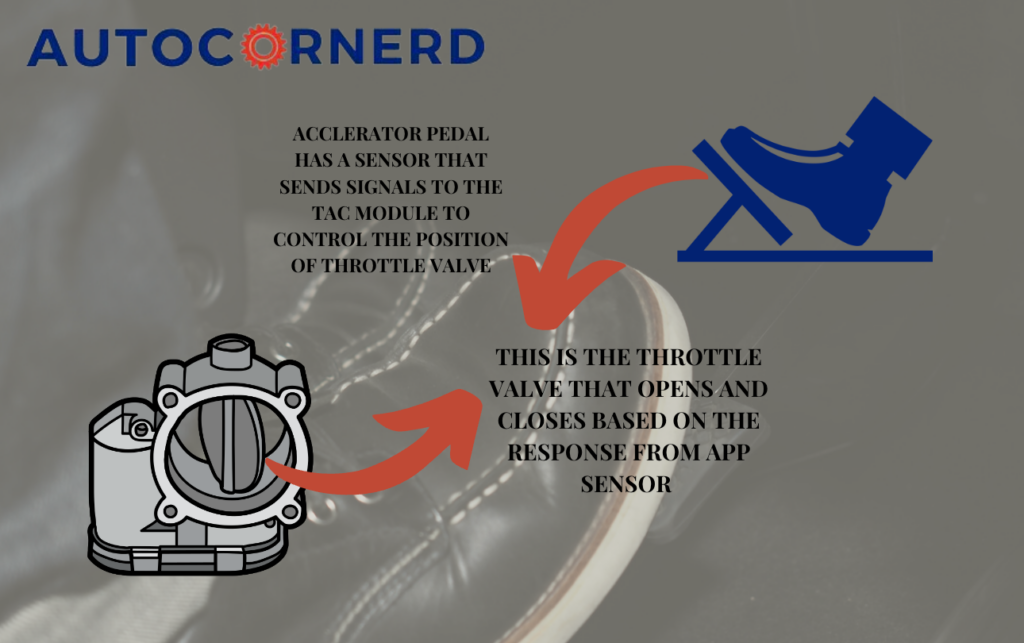
The accelerator pedal is the main control for speeding up our vehicles. When we press down, it starts a series of events leading to forward motion.
The pedal acts as the driver’s primary accelerator. As you step on it, sensors detect the force applied. These electronic eyes translate your foot’s motion into signals for the engine brain.
The brain commands the throttle to open wider based on your input. Adjusting the throttle regulates airflow into the motor.
Effective combustion needs the right air-fuel mix. Opening the throttle allows more air into the intake.
More air means more fuel from the injectors on each intake stroke. This precision ensures the mixture stays efficient.
With more burning fuel and explosions, the engine makes more power.
This force reaches the wheels through gears that turn motor spin into wheel rotation.
Driving uses engine power to speed up. But issues like slipping gears hinders Chevy trucks from accelerating, feeling like power loss. The real problem is the transmission.
Here’s a quick summary of how power is produced in vehicles:
| Vehicle Power Generation Process | Description |
| Press the accelerator pedal | Sets off a chain reaction of events under the hood of the vehicle |
| Accelerator pedal | Primary means for the driver to control acceleration |
| APP sensor | Detects the force applied by the driver and translates it into electronic signals |
| Throttle position sensor (TPS) | Receives signals from the APP sensors and relays the information to the Engine Control Unit (ECU) |
| Engine Control Unit (ECU) | Commands the throttle valve to open wider or narrower based on the driver’s input |
| Throttle valve | Regulates the amount of air that enters the engine |
| Ideal air-fuel mixture ratio | Maintained by adjusting the position of the throttle valve |
| Fuel injectors | Controlled by the ECU and deliver a corresponding amount of fuel for each intake stroke |
| Engine power output | Increased by delivering more fuel and controlling the air-fuel mixture ratio |
| Transmission system | Transfers the rotational force from the engine to the wheels |
| Problem with transmission | Hinders the ability to engage gears properly, impacting the vehicle’s ability to pick up speed and leading to power loss |
Scan Trouble Codes If Your Chevy Truck Is Losing Power When Accelerating
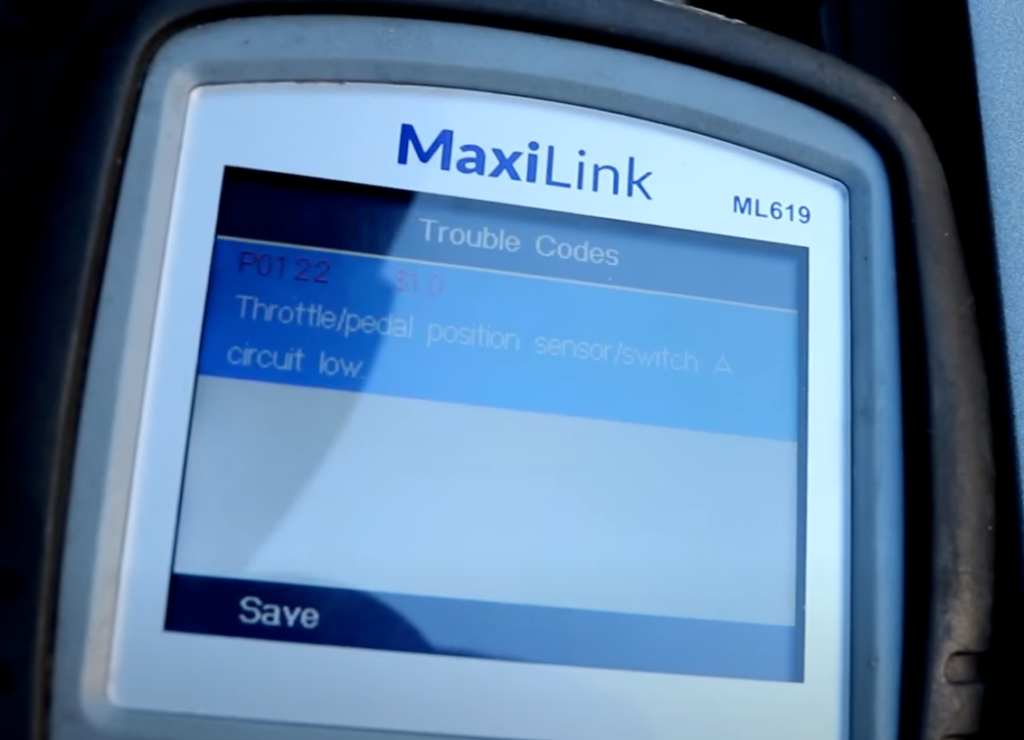
The Chevy truck relies on its engine working properly to accelerate smoothly. But sometimes, there can be issues that make the engine lose power when you press down on the gas pedal. Using an OBD2 scanner tool to check the error codes on Chevy trucks made after 1994 can help uncover these problems.
The scanner displays alphanumeric trouble codes that point to the potential cause, like a failed sensor or problems with the fuel system. Some common codes Chevy owners see when acceleration power drops are:
- P0300 to P0308 – This means one or more engine cylinders are misfiring instead of firing normally. Faulty spark plugs, ignition wires, fuel injectors, valves or low compression could be the reason why the cylinder doesn’t fire right. Misfires affect the engine’s combustion and take away power. If you want to know which cylinder is misbehaving, you can use my guide on the Chevy 5.3 firing order to learn more.
- P1125 – The electronic throttle actuator motor isn’t working right. This system controls the airflow into the engine. When it fails, the engine computer can’t adjust the fuel and air intake properly.
- P0120-P0124 – These codes mean there is an issue with the throttle position sensor or gas pedal position sensor. They measure how far down you have pressed the gas pedal and throttle opening position to help the engine computer optimize fuel and airflow. If they malfunction, the computer can’t do its job well, causing power loss.
- P2135 – The engine computer sees the two throttle position sensors giving inconsistent readings. This makes it unable to pinpoint the true throttle opening, leading to problems controlling the airflow and fuel.
- P1516 – The throttle actuator control module that operates the throttle actuator motor has failed in some way. This results in the throttle not opening to the position needed for proper acceleration.
The computer needs accurate data to deliver the right fuel and air to the engine. Sensor problems throw it off, while throttle and cylinder issues directly affect power production. So when acceleration suffers, decoding the trouble codes guides you to the real culprit.
Causes of Chevy Truck Losing Power When Accelerating
Here are the causes of Chevy truck losing power when accelerating:
1. Bad Throttle Position Sensor
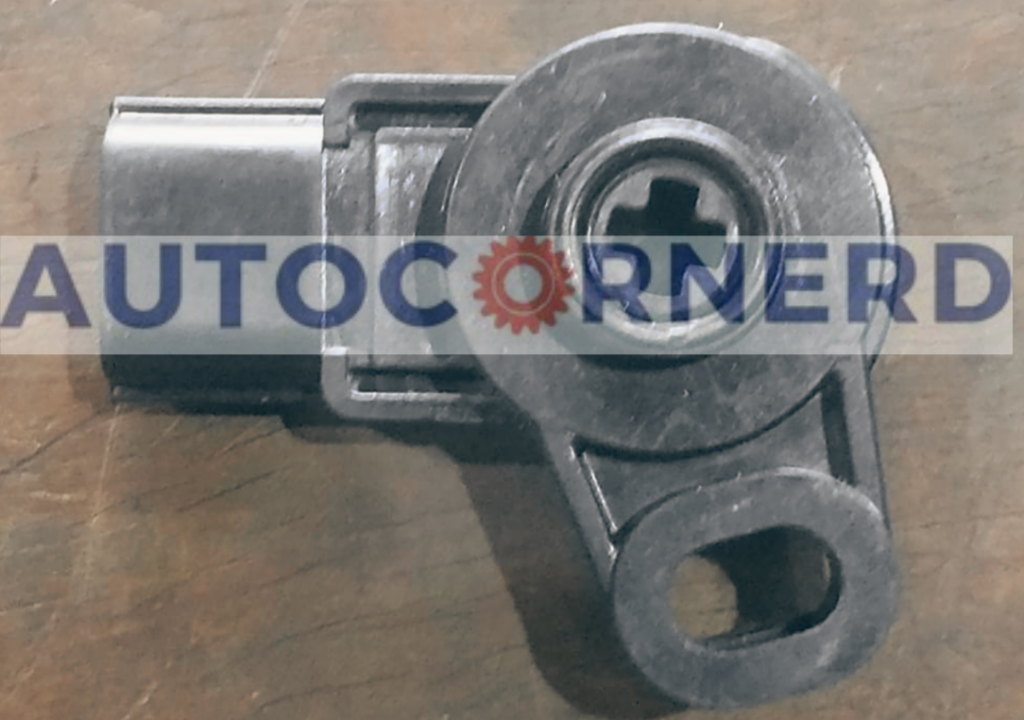
Known as the butterfly valve, the throttle valve is a flap that opens and closes to control the airflow entering your engine’s cylinders. The more you press the gas pedal, the wider it opens, allowing more air to mix with fuel for combustion.
Attached to the throttle body housing, the throttle position sensor tracks the position of this throttle valve. Its role is to send position signals to the engine control unit (ECU). Using both the airflow data and throttle position, the ECU calculates the right fuel amount to inject. It’s a delicate balance the ECU constantly adjusts.
When everything is working right, you experience smooth accelerator response and optimal engine power. But if the throttle position sensor malfunctions, this delicate fuel-air calibration gets disrupted. Here’s a closer look at what goes wrong:
- Faulty Readings – A worn-out sensor may feed incorrect valve position data to the ECU. With inaccurate information, the ECU can’t properly set fuel injection volumes. You’ll notice weak acceleration as the engine runs too lean.
- Delayed Response – Sensor degradation can also cause a sluggish, delayed reaction to your gas pedal input. There will be a noticeable lag before the throttle valve responds. The ECU then lags in fuel delivery, again resulting in poor acceleration.
- Communication Breakdown – In severe cases, the throttle position sensor fails completely. This severs the connection between your pedal and the ECU. Without any valve position data, the ECU is flying blind and can’t compute appropriate fueling. Acceleration falters as the fuel-air ratio goes completely out of sync.
Troubleshooting and fixing a bad throttle position sensor:
Let’s walk through how to get your truck back up and running.
- First, use an OBD-II scanner to check for any trouble codes related to the TPS. These codes can point you in the right direction. Visually inspect the sensor as well, looking for dirt, damage or anything out of the ordinary.
- If the TPS seems dirty, clean it carefully using electrical or throttle body cleaner. Follow the product instructions to avoid any safety risks. Cleaning the sensor contacts may do the trick. But if power is still lacking after a thorough cleaning, the TPS likely needs replacing.
- Don’t forget to check the wiring and connections to the sensor too. Loose plugs or damaged wires anywhere along the line can cause problems. Make sure each connection is solid and corrosion-free. Repair or replace anything suspicious to ensure proper electrical flow.
To test the TPS sensor for the Chevy truck, connect the black probe of the voltmeter to the ground and another red probe to the 5V signal wire of the connector of the TPS sensor.
You can consult the owner’s manual to find out which wire is a signal wire of the harness connector of the TP sensor.
With the ignition key ON, the engine off and the throttle closed (without pressing the accelerator pedal), the TP sensor voltage should be approximately 0.5 to 1.2 volts.
As the throttle is smoothly open or closed, the voltage reading should smoothly increase or decrease. Make sure to slowly increase or decrease the throttle to detect any abnormalities in the voltage reading of the sensor.
2. Accelerator Pedal Position Sensor Malfunction Limits Power
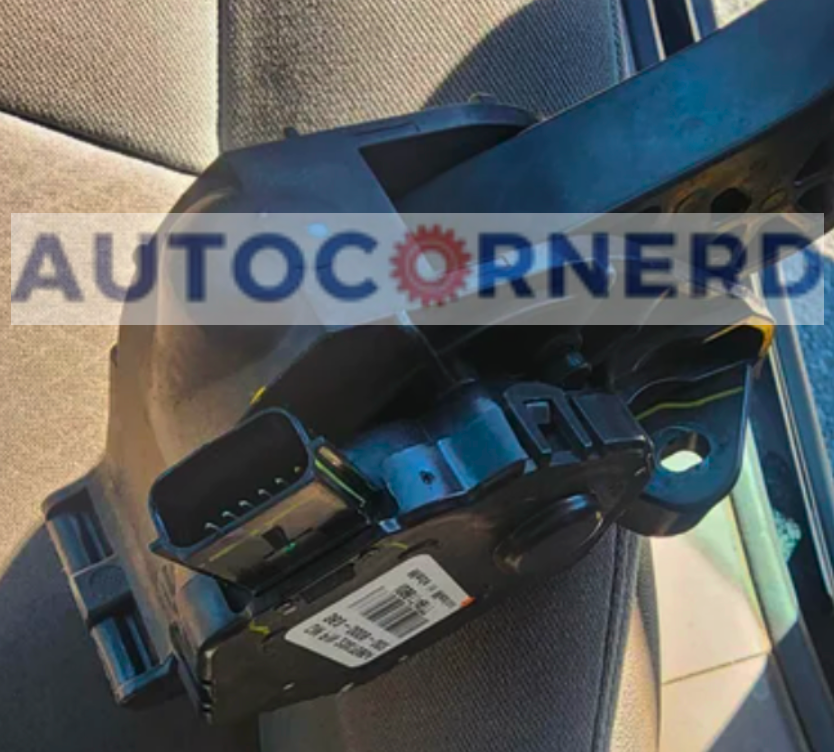
The accelerator pedal position (APP) sensor is usually found under the dashboard, attached to the gas pedal assembly. It is made up of two or three potentiometers. These are devices that can change resistance based on the position of the gas pedal.
The engine control module (ECM) monitors the changing voltage signals from the potentiometers. This is how it calculates the precise pedal position and angle.
The APP sensor is part of the drive-by-wire system. This replaces the old mechanical link between the pedal and throttle body with electronic signals instead.
In simple terms, throttle bodies can be mechanical or electronic. Mechanical throttle bodies connect to the gas pedal using a mechanical linkage called a throttle cable. Electronic throttle bodies connect to the pedal using an APP sensor.
The APP sensor measures how far down the gas pedal is pressed. It sends these pedal position signals to the ECU (engine control unit). The ECU then sends electric signals to open the electronic throttle body motor exactly based on how far down the pedal is pressed.
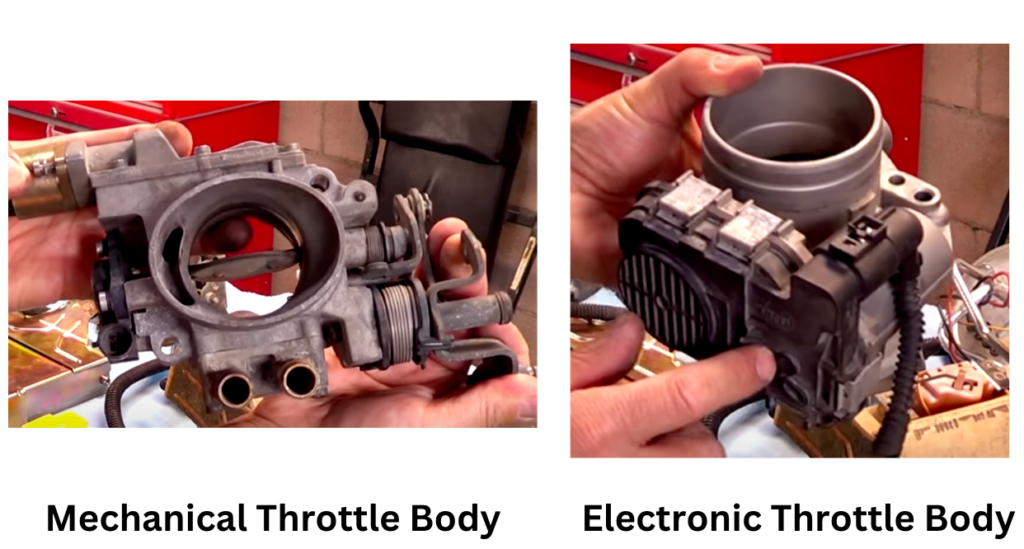
If the APP sensor malfunctions, it will send incorrect signals to the ECU. As a result, the ECU will not be able to determine to what extent the throttle valve should be opened or closed.
As a result, the incorrect amount of air will pass through the throttle body, due to which you may also experience fluctuating acceleration, even when the pedal is held steady.
How to test APP sensor?
The chances are that the sensor is fine but the water intrusion can damage the wires of the harness connector of the APP sensor. The method to test the APP sensor is the same as I explained for the TP sensor. You can watch the following video to learn more:
3. Carbon Buildup on Spark Plugs Causes Misfires
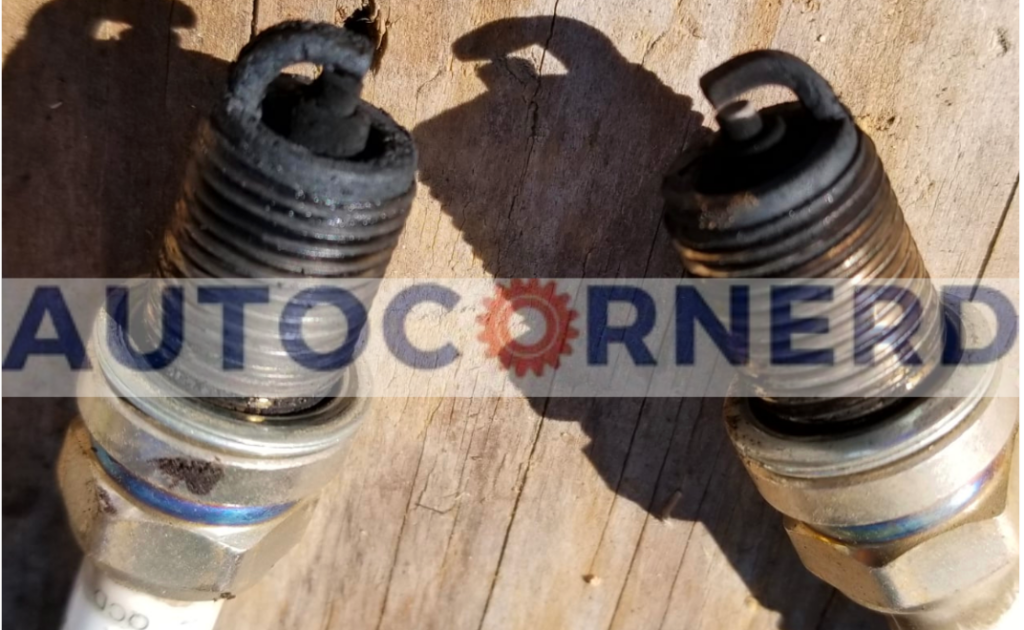
Spark plugs are tiny but mighty parts that generate the spark for igniting fuel in your engine. They connect to the ignition coil which directs an electric jolt to the plug at just the right moment.
The plug has two electrodes, one in the center and one grounded to the metal casing. The space between them, called the gap, determines the power and length of the spark. Wider gaps make stronger sparks but they don’t last as long.
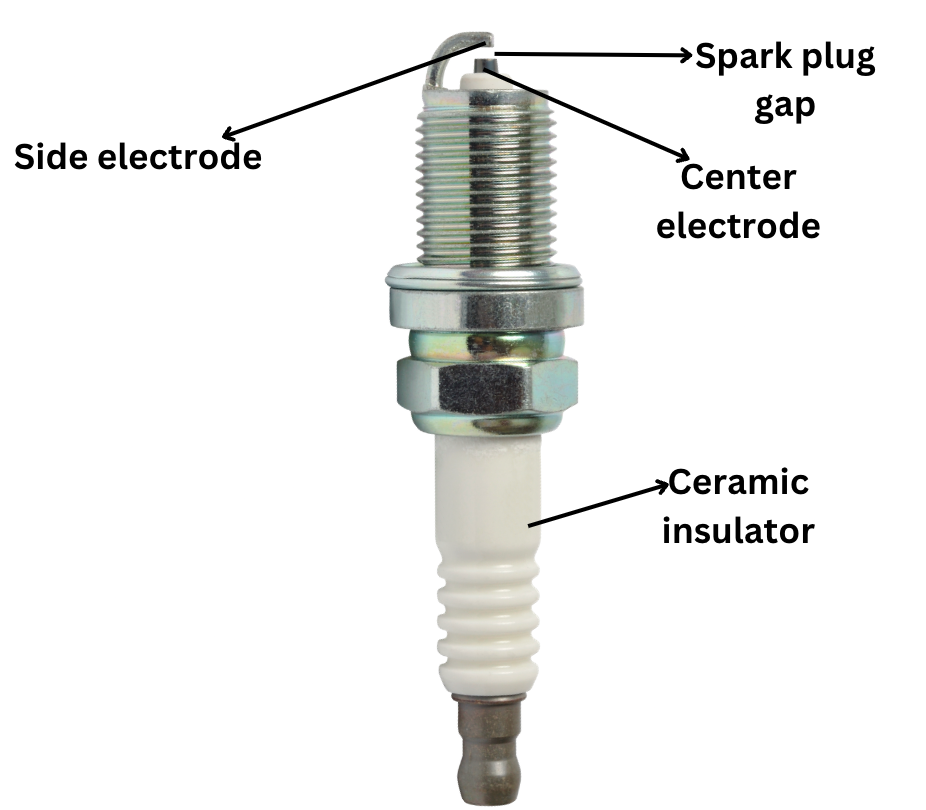
The ceramic insulator serves a key role as a barrier separating the center electrode from the metal body. Its main task is stopping electricity from prematurely arcing across before the spark enters the combustion chamber.
In essence, the insulator acts like a protective wall that blocks the ignition coil’s current from taking a shortcut to the engine block. If the current flowed straight to the block, it could wreak havoc on the electrical system.
But when oil, fuel or carbon buildup pollute the insulator’s surface, it can cause some leakage across. This leakage leads to incomplete fuel burning and misfires.
What Causes Fouled Spark Plugs?
There are a few key ways fouling happens on your Chevy’s spark plugs:
- First, an incorrect gap between the metal electrodes. The tiniest gap makes a huge difference. Follow your manual religiously. The right measurement allows the powerful spark to jump consistently. Too wide or narrow, and the spark sputters. Then, misfires plague your truck, along with poor fuel economy and lackluster acceleration.
- Second, simple wear and tear. The electrodes endure scorching heat and intense voltage inside the combustion chamber. Eventually, that harsh environment erodes or cracks the metal. Again, the spark loses its potency. Replace the plugs every 45,000 to 80,000 miles. The lifespan depends on your model and driving style.
- Third, unbalanced air and fuel mixture. Too much fuel, not enough air leads to carbon buildup. That’s a rich mixture. On the flip side, excessive air with inadequate fuel causes overheating. The result – ash fouling on the electrodes. Both hinder robust sparking.
- Fourth, oil leaking into the cylinders. Worn piston rings, faulty valve seals, or a damaged head gasket can all cause oil to drip where it shouldn’t. The slick oil coats the plugs, dampening the spark. You’ll notice blue exhaust smoke, poor performance, and oil consumption rising.
- Fifth, overheating issues like coolant leaks or low levels. Extreme heat damages the plugs because of a blown head gasket. This leads to pre-ignition and detonation. These put tremendous stress on the engine, shortening its lifespan.
How to fix?
You can try cleaning the spark plugs using the wire brush and spark plug cleaner to carefully remove any carbon deposits or contaminants from the electrode. Ensure not to damage the electrode or insulator in the process.
First, use compressed air to clean off any dirt and debris. Then, keep the spark plug soaked in the brake cleaner till all the gunk on the spark plug is washed away.
4. Clogged Fuel Filter Restricts Fuel Flow Causing Power Loss
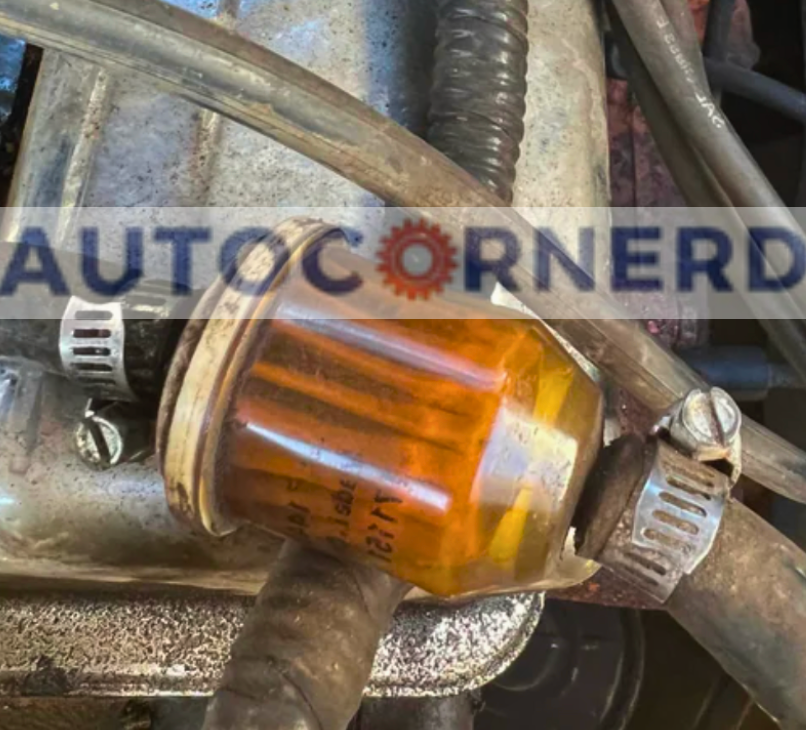
The fuel filter is an important but often overlooked component that keeps your Chevy truck’s engine running smoothly. Sitting along the fuel line between the gas tank and engine, this handy filter traps tiny contaminants, stopping them from reaching sensitive engine parts.
It’s a first line of defense, catching dirt, rust flakes, and other junk before they cause trouble. With a clean fuel filter, you can have confidence that only purified gasoline flows into the engine.
Over time, gunk inevitably builds up in the fuel filter, slowly constricting fuel flow.
Know the common causes of clogged filters so you can take preventative steps:
- Fuel Contamination – Water or particles sneak into the gas tank, hitching a ride to the filter. Keep your tank full and use fuel stabilizers to discourage condensation.
- Old Fuel – Gasoline degrades over months, forming sediment and varnish. Avoid long-term storage and treat stored fuel. Change filters proactively.
- Infrequent Maintenance – Replace fuel filter per the manual. Don’t wait for failure. Maintenance keeps contaminants from accumulating.
How can you tell if your Chevy’s fuel filter needs replacement?
If the fuel pressure is lower than the required level, it might lead you to consider the fuel injectors, fuel pressure regulator, or, ultimately, the fuel filter.
A fuel injector stuck in the open position can cause inaccurately low fuel pressure, as fuel flows directly through the injector. This is because if fuel injectors always remain open, fuel can’t sustain pressure in the fuel rail.
Instead, it will continuously flow through the fuel injectors, which will also cause a rich mixture and losing power of your Chevy truck.
Similarly, a failing fuel pressure regulator can tamper with fuel pressure and, therefore, affect the fuel filter’s performance.
If you’ve already checked the fuel pressure regulator and fuel injectors and found no issues, it’s time to move on to inspecting the fuel filter.
Fortunately, a simple test can confirm a failing Chevy fuel filter. With proper safety precautions, remove the fuel filter and blow through the inlet with a straw. Difficult airflow indicates blockage. Replace immediately for smooth running.
If air flows through the filter without any hindrance, the fuel filter is in good condition. However, if the airflow is slow or blocked, it indicates a faulty fuel filter that needs to be replaced.
Favorably, fuel filters are relatively inexpensive components, making their replacement cost-effective. However, keep in mind that accessing the fuel pump (if necessary) can be labor-intensive and more expensive.
5. Worn Fuel Pump Unable to Maintain Pressure Under Load
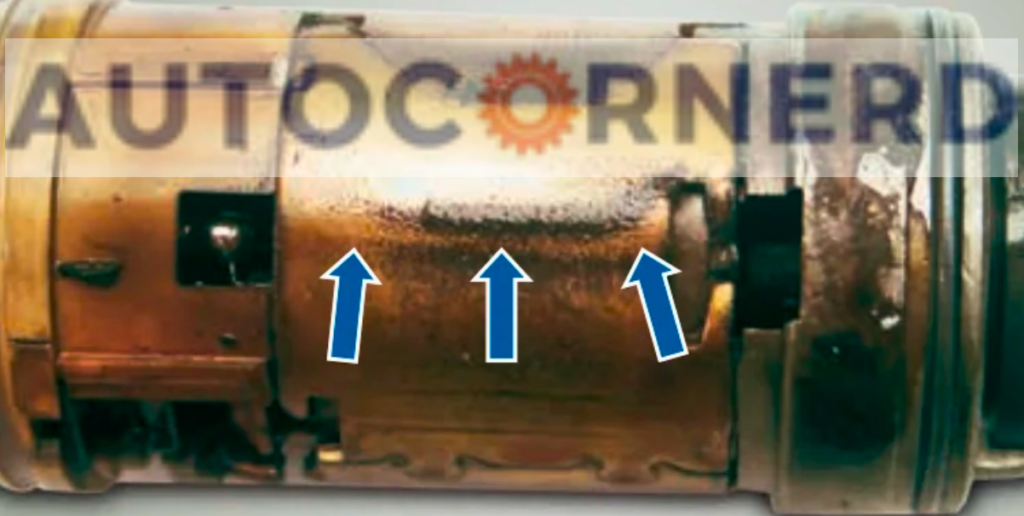
The fuel pump has a big job. This little engine part needs to send just the right amount and pressure of fuel to the injectors. The injectors then spray the fuel into the engine.
If the fuel pump isn’t working right, your engine can lose power in a few ways:
- Low fuel pressure. When the pump can’t push enough pressure to the injectors, they can’t spray enough fuel. Without enough fuel to burn, the engine misses out on power. You might see the check engine light come on from low or rich fuel mixtures.
- Faulty or worn-out fuel pump. Over time, contamination, overheating, or running low on gas can wear out the pump. Then it might work sometimes or stop completely. A bad fuel pump makes starting hard or impossible. It can also cause surging, sputtering and whining noises.
- Electrical issues. The pump needs power to work. Faulty wiring, a bad relay, or blown fuse can cut off electricity to the pump. Then performance gets poor or dies.
Checking the pump is pricey. First make sure the injectors, regulator, and filter aren’t the problem before diagnosing the pump. We have a guide on common issues after a fuel pump change.
6. Clogged Air Filter Increases Resistance and Lowers Horsepower
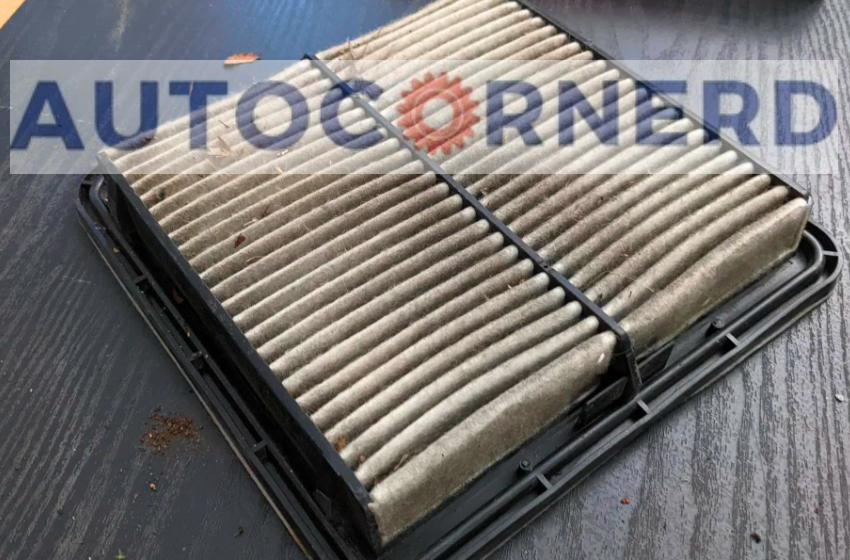
When your Chevy truck struggles to speed up, a dirty air filter could be the culprit. The air filter gives your engine clean air for burning fuel.
Accelerating needs more air and gas to power up your engine. But a clogged filter limits airflow, so your engine can’t get enough oxygen to burn fuel well.
Without enough air, your engine lacks power to accelerate. You may feel your truck hesitate or misfire when you hit the gas. An engine light might come on too.
How to check?
Regularly check and change dirty air filters. Chevys usually need new filters every 15,000 miles depending on your driving.
To check, find the plastic air filter box with a hose. Open it by unclipping or unscrewing the lid. Inspect the filter in sunlight or tap it to see dirt fall off. Replace filters that are too dirty.
Moreover, after every 1000 miles, clean the air filter with compressed air so that it lasts longer.
7. Vacuum Leaks Upset Air Fuel Ratios Lowering Acceleration
In an engine, a vacuum forms when pistons move down, drawing in the air-fuel blend. This vacuum has key roles like running brakes and emissions parts like the EVAP purge valve and EGR valve.
An unintended opening or gap in the intake system is a vacuum leak. It lets air enter without the MAF or MAP sensor measuring. This causes problems:
The engine requires an air-fuel ratio around 14.7:1 to fully burn.
A leak can make the mix too thin (not enough fuel) or too rich (excess fuel).
A lean or rich mix leads to poor performance, more emissions, and potential engine damage.
If the air-fuel blend is rich, there is too much fuel to fully burn. This can waste fuel, increase emissions, and hurt the catalytic converter.
Causes of vacuum leaks
Here are the parts of the engine on which you should check if the air is leaking into the engine:
- Throttle body gasket
- Intake manifold gasket
- PCV valve
- EVAP purge valve
- Air intake hose
- Loose or Cracked Vacuum Fittings
How to find vacuum leaks?
The engine’s intake pulls in air to mix with fuel for combustion. This vacuum can reveal leaks. One technique pinpoints vacuum leaks by spraying carburetor cleaner around suspected areas as the engine runs.
The intake will suck in cleaner if there’s a leak, altering idle speed. Use a stethoscope or hose to listen for engine changes while spraying.
Also listen for any hissing as the engine runs, signaling a potential vacuum leak.
Smoke testers offer another leak finder. They pump smoke into the intake. If smoke escapes a spot, it pinpoints the leak for easy ID.
8. Bad Distributor or Ignition Coil
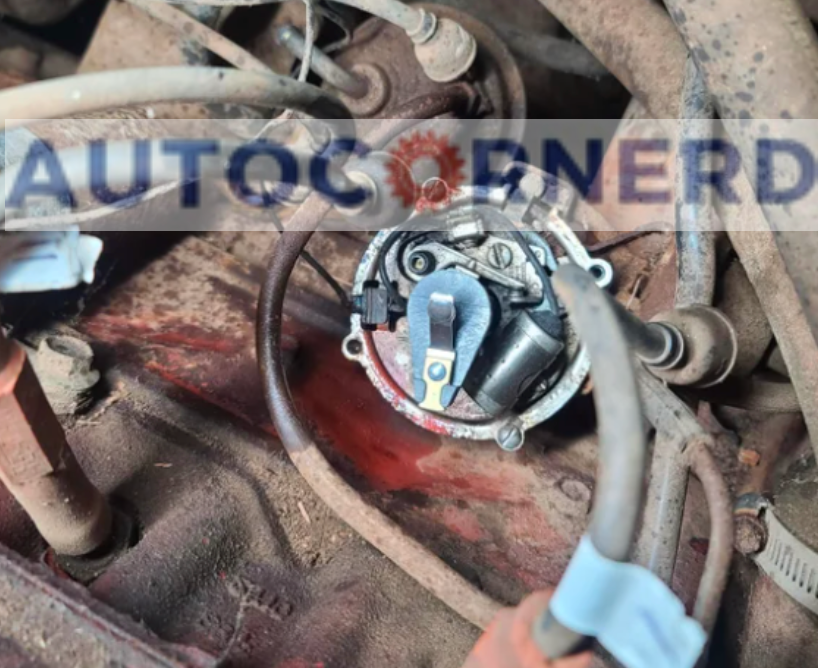
Chevy trucks with 4.3 engines are well known for having troublesome distributors that fail over time. The distributor is a key engine component that directs high voltage from the ignition coil to the proper spark plug, ensuring the correct ignition timing for optimal performance.
Inside the distributor, a long rotating metal shaft connects to the camshaft, turning the rotor at the precise speed and timing required. The rotor sits under a protective distributor cap, which contains metal contact points leading to each spark plug wire.
Unfortunately, those contact points eventually accumulate carbon buildup or wear out from use. This decreases the intensity of the spark, leading to reduced power when accelerating in your Chevy. Replacing the cap and rotor may help, but often the whole distributor needs rebuilt or replaced in these engines.
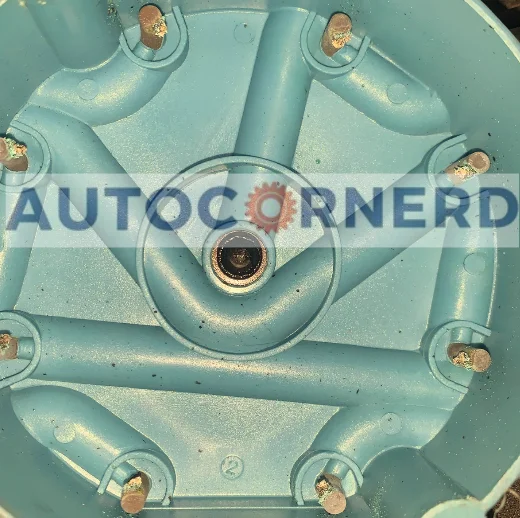
Moreover, leakage of electric power due to cracks or corrosion in the distributor cap or rotor can also occur, resulting in sparks jumping to the wrong terminals or grounding out.
Lastly, the distributor gear or shaft also wears out, resulting in wobbling or skipping of the distributor and erratic ignition timing.
Important point while replacing the distributor
When you replace the distributor, mark the position of the distributor cap and rotor relative to the engine block and cylinder head. Install the new distributor in the same position. If you don’t follow this, the ignition timing will be affected. You can learn more in my guide on bad ignition control module symptoms.
9. Catalytic Converter Blockage Limits Exhaust Flow Reducing Power
The mix of exhaust gases flowing into the catalytic converter needs to be just right. Over time, residue can build up and clog the honeycomb structure inside, much like plaque in arteries. This blocks the flow, builds backpressure, and chokes the engine.
You can learn more in my guide on CAT delete.
Think of it like trying to drink a milkshake through a coffee stirrer – frustrating and slow. Your Chevy truck needs to inhale and exhale freely for optimal performance.
When the exhaust hits resistance, your truck engine can’t fully exhale. It has to work harder on each cycle just to breathe. Power drops, acceleration lags. It’s like running a race while holding your breath.
How does a catalytic converter become bad?
A catalytic converter becomes bad due to following reasons:
- Poor quality fuel that contains impurities or additives that can contaminate the catalysts
- Engine problems that cause incomplete combustion or misfires that send unburned fuel or oil into the exhaust system
- High temperatures that melt or warp the metal casing or the honeycomb structure
- Physical damage from road debris or accidents that crack or dent the catalytic converter
How to detect?
If your scan tool is showing any OBD2 code related to bad emissions or catalytic system efficiency, you should immediately check the catalytic converter. This guide on testing a clogged catalytic converter is also quite helpful. You should check that out.
Final Thoughts
There are many potential causes for a Chevy truck losing power during acceleration. A thorough diagnosis is important to identify the root problem, whether it’s a faulty sensor, clogged filter, or other mechanical issue.
A lack of responsiveness when pressing the gas can negatively impact safety and performance. By understanding how the engine and various systems work together to deliver power, owners can better troubleshoot issues and make informed repairs.
Some First Hand Experiences Shared By Users In Different Communities
Our team conducted research across various online communities, forums, and subreddits to gather user comments and opinions on “Chevy truck losing power when accelerating”.
User 1 says:
Had a similar issue last month. My Silverado started losing power during acceleration. Turned out, it was a clogged fuel filter. Replacing it solved the problem. Noticed it first when my truck struggled uphill.
User 2 says:
My Avalanche had this problem. I realized it was due to bad spark plugs after noticing misfires and inconsistent idling. Replaced the plugs and wires, and it was back to normal.
User 3 says:
Experienced a similar issue with my Traverse. It was a bit tricky to diagnose, but turned out to be a faulty throttle body. After cleaning and recalibrating it, the power loss issue during acceleration stopped.
User 4 says:
Tahoe owner here. My truck lost power suddenly while accelerating. After a quick check, I found a cracked intake manifold gasket. Got it replaced and the problem was fixed.
User 5 says:
I drive a Suburban, and it had this issue. The culprit was a clogged catalytic converter. Got it replaced, and the acceleration power came back.
User 6 says:
In my case with the Equinox, the issue was a dirty air filter restricting airflow. Simple fix, just replaced the air filter, and it was good as new.
User 7 says:
Own a Trailblazer that had this issue. It was tricky, but finally traced it to a faulty EGR valve. Replaced the valve, and the power loss during acceleration was no longer an issue.
